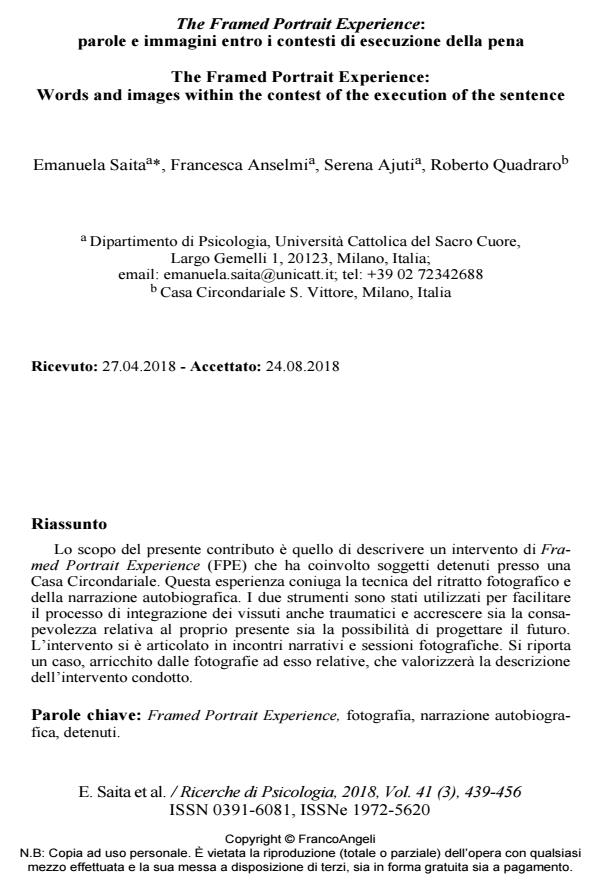The Framed Portrait Experience: Words and images within the contest of the execution of the sentence
Journal title RICERCHE DI PSICOLOGIA
Author/s Emanuela Saita, Francesca Anselmi, Serena Ajuti, Roberto Quadraro
Publishing Year 2018 Issue 2018/3
Language Italian Pages 18 P. 439-456 File size 236 KB
DOI 10.3280/RIP2018-003008
DOI is like a bar code for intellectual property: to have more infomation
click here
Below, you can see the article first page
If you want to buy this article in PDF format, you can do it, following the instructions to buy download credits

FrancoAngeli is member of Publishers International Linking Association, Inc (PILA), a not-for-profit association which run the CrossRef service enabling links to and from online scholarly content.
The purpose of this paper is to describe a Framed Portrait Experience (FPE) that involved individuals convict in prison. This experience combines the technique of photographic portrait and autobiographical narration. These tools have been used to ease the process of integration of thoughts, feelings and memories, and to gain a deeper understanding of himself, and to increase on one hand the awareness of their own present and on the other hand the prospects of planning the future. The intervention was divided into six narrative meetings, followed by photographic sessions. A case is presented, enriched by its related photographs, which will enhance the description of the intervention.
Keywords: Framed Portrait Experience, photography, autobiographical narration, prisoners.
- Implementing the framed portrait experience with Italian breast cancer survivors: a pilot study assessing short term effects of an existential approach to body image, coping skills, and self-efficacy Denise Vagnini, Antonia Sorge, Chiara Acquati, Francesca Antonia Colafemmina, Emanuela Saita, in Journal of Cancer Survivorship /2024 pp.1998
DOI: 10.1007/s11764-023-01438-6
Emanuela Saita, Francesca Anselmi, Serena Ajuti, Roberto Quadraro, The Framed Portrait Experience: parole e immagini entro i contesti di esecuzione della pena in "RICERCHE DI PSICOLOGIA " 3/2018, pp 439-456, DOI: 10.3280/RIP2018-003008